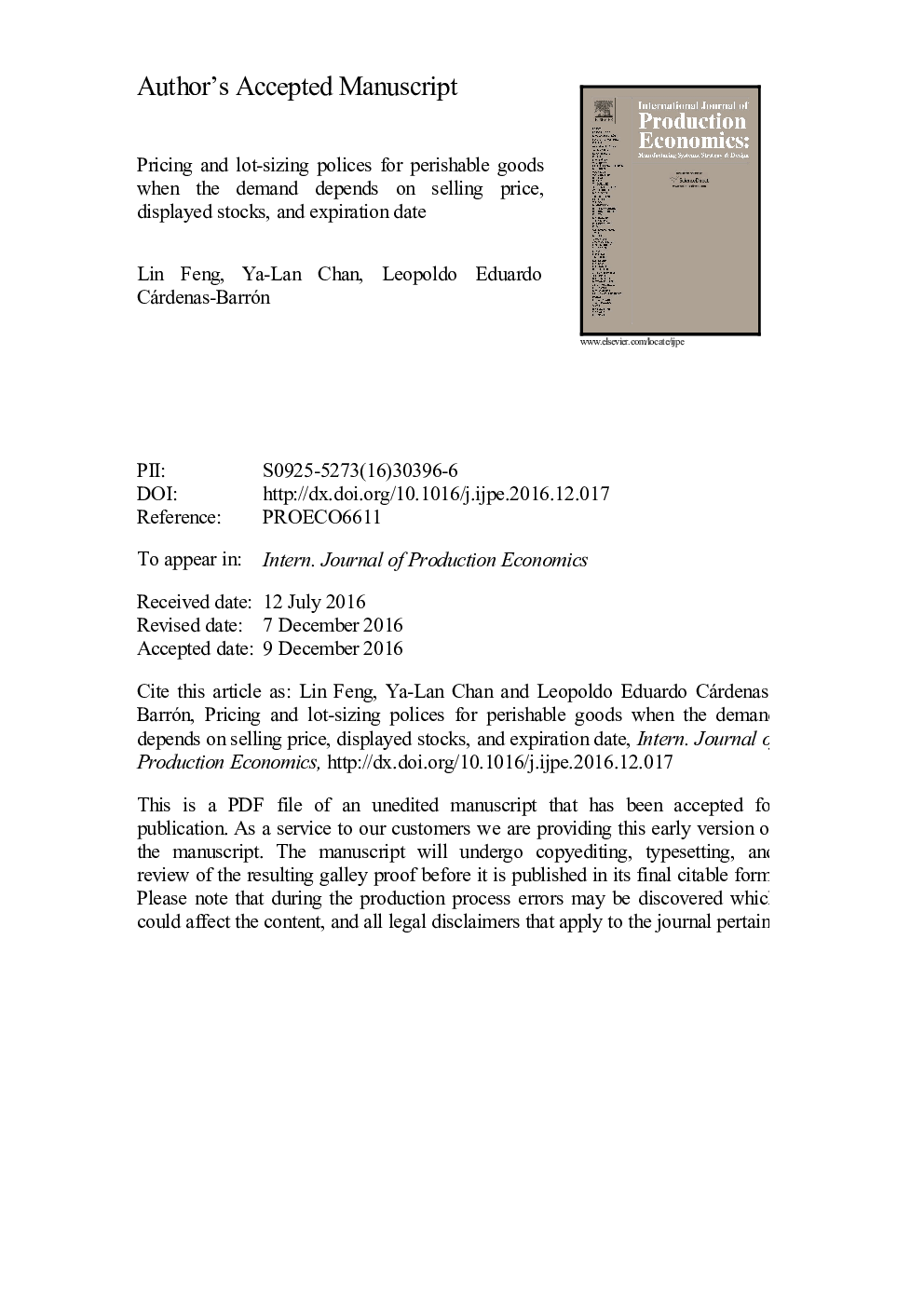| Article ID | Journal | Published Year | Pages | File Type |
|---|---|---|---|---|
| 5078970 | International Journal of Production Economics | 2017 | 35 Pages |
Abstract
Price is a major factor on the demand based on marketing and economic theory. In addition, the demand for perishable products also depends on its freshness. Moreover, it is a well-known fact that increasing stock display (e.g., fresh fruits, vegetables, baked goods) may encourage consumers to purchase more. This paper first proposes an inventory model that stipulates the demand explicitly in a multivariate function of price, freshness, and displayed stocks. It may be profitable to have a closeout sale at a markdown price, and always keep on-hand displayed stocks fresh and plentiful if the demand is freshness-and-stock dependent. Hence, the traditional assumption of zero ending inventories is relaxed to a non-zero ending inventory. As a result, the objective is to determine three decision variables (i.e., unit price, cycle time, and ending-inventory level) in order to maximize the total profit. Then it is demonstrated that the total profit is strictly pseudo-concave in those three decision variables, which reduces the search for solutions to a unique local maximum. Finally, numerical examples to illustrate the theoretical results and to highlight managerial insights are presented.
Related Topics
Physical Sciences and Engineering
Engineering
Industrial and Manufacturing Engineering
Authors
Lin Feng, Ya-Lan Chan, Leopoldo Eduardo Cárdenas-Barrón,
